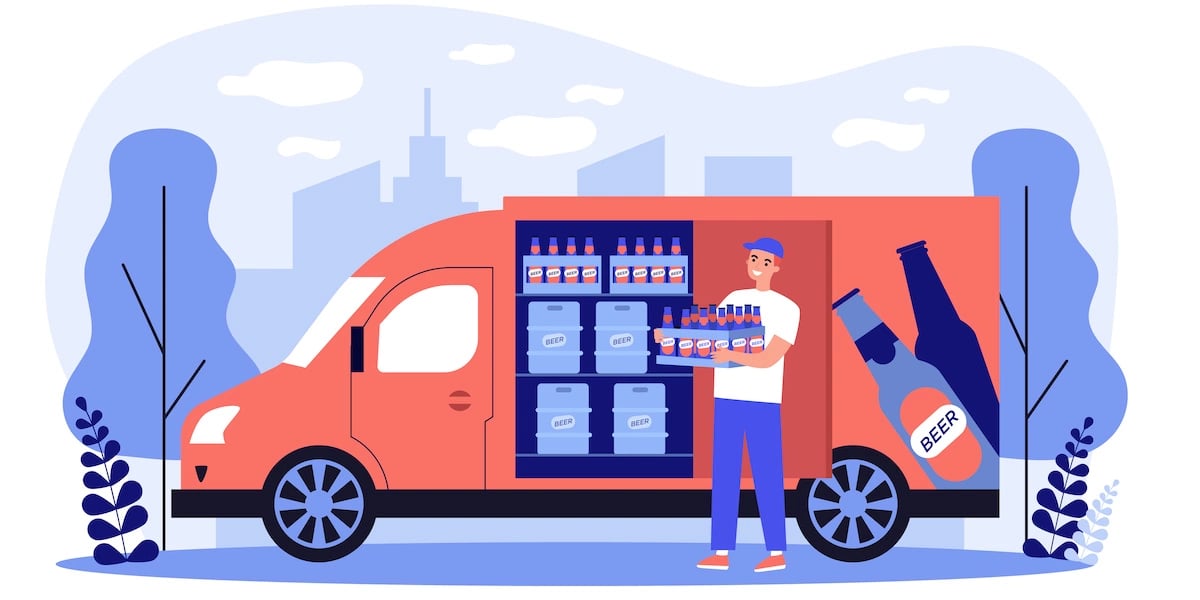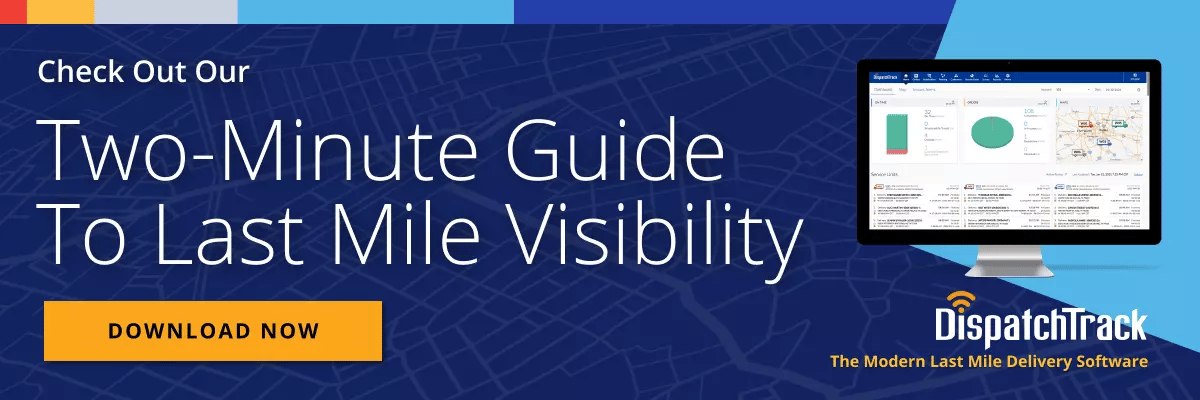Customer satisfaction is just as important in B2B deliveries and distribution as it is in B2C—if not more so—but the end result of that satisfaction doesn’t always look the same on the outside. When you deliver a new couch to someone’s home, a successful delivery might elicit smiles of delight. When you get a case of beer to the right place at the right time, the customer is more likely to act like this represents business as usual—because it should.
 Unfortunately, getting the right goods to the right place at the right time in an efficient manner remains a challenge—and there are often tough tradeoffs to be made between ensuring that every customer gets their order exactly as scheduled and maximizing the number of stops in the day. In this post, we’ll explain how a right-time delivery approach—backed up by the right processes and B2B delivery technology—can ameliorate that challenge and help you boost customer satisfaction.
Unfortunately, getting the right goods to the right place at the right time in an efficient manner remains a challenge—and there are often tough tradeoffs to be made between ensuring that every customer gets their order exactly as scheduled and maximizing the number of stops in the day. In this post, we’ll explain how a right-time delivery approach—backed up by the right processes and B2B delivery technology—can ameliorate that challenge and help you boost customer satisfaction.
What Is Right-Time Delivery?
B2B operations know better than most that early deliveries are, in many cases, just as bad as late deliveries. If a restaurant is expecting a truck with a pallet of cabbages to show up at two, and the truck is an hour and half early, there’s going to be a huge disruption in the middle of their lunch rush. Likewise, if you’re delivering to a job site and you show up with supplies that the foreperson can’t use until the right hardware arrives three hours later, your delivery is going to take up space in a crowded construction site and potentially get in the way of other work.
For many businesses, B2B and B2C alike, “on-time” has a tendency to mean “not late.” But as we can see from the examples above, just avoiding late deliveries isn’t good enough: you need to deliver at precisely the right time for the customer in order to declare success for a particular delivery.
Thinking about deliveries in these terms helps businesses to increase their focus on the importance of the customer in the delivery process. Since “right-time” fundamentally means “the right time for the customer,” it’s not just a matter of making a schedule and sticking to it. Instead, it’s a matter of actively engaging with the customer so they know when to expect the delivery, and offering them transparency at every stage of the process up to (and beyond) the moment when the truck arrives as expected. This requires delivery organizations to be connected, agile, and intelligent across the board.
%20(1).webp?width=1200&name=DPT210913_WholesaleFoodBanner_v2%20(1)%20(1).webp)
Delivery Management Challenges in B2B Supply Chain
Making this happen can feel like a tall order, especially in contexts that involve mostly recurring deliveries (e.g. beer distribution, food wholesaling, etc.). Like we saw above, most of these delivery sites are places where an early delivery is potentially even worse than a late one. In industries where on-time delivery is simply non-negotiable when it comes to customer retention, many businesses wind up delivering fewer stops per day than their capacity allows, just to add buffer time before stops. This obviously results in a lot of wasted driver time and much less profitable routes. But if the alternative is to risk losing business, it’s the only viable option.
But how did we get here? Why, exactly, is it so difficult to optimize B2B delivery processes without risking a dropoff in customer satisfaction and potential churn? There’s a handful of common culprits:
- High complexity: Most customers have specific requests for when they want their deliveries. As anyone who has ever put a route together by hand can tell you, this introduces a high level of complexity into the routing process, such that finding optimal routes that maximize the number of stops per route becomes nearly impossible.
- Low flexibility: A direct result of this high level of complexity is that making adjustments to routes is difficult or impossible—at least if you don’t want to risk things going haywire. It’s hard to predict the impacts of potential changes to your delivery plan, which makes it too risky to try and find new efficiencies, or even to take on new business.
- Poor visibility: Right-time delivery doesn’t begin and end with the driver—it’s part of a cohesive customer experience that often involves touchpoints with sales and merchandising. Unfortunately, keeping sales and merchandising teams in the loop and coordinating them with deliveries requires a level of last mile visibility that many businesses simply don’t have.
- Lackluster reporting: Improving delivery management obviously starts with setting a baseline, but the factors we’ve already discussed above can make it difficult to even get an accurate accounting of your cost-per-stop or cost-per-route. Often, this is a result of legacy technology that lacks the connectivity and intelligence that right-time delivery demands.
A lot of this ultimately comes down to routing. Most distributors rely on recurring static route plans to get the right product to their customers at the right time—and static routes are inflexible by definition. At the same time, they’re often a necessity if you want to maintain stability for your most important customers.
How a Hybrid Approach Powers Right-Time Deliveries
So, how do B2B last mile delivery operations get around the seeming contradiction of maintaining stability in their customer service while also looking for more efficient ways to conduct their deliveries? The answer may be a hybrid approach that combines static and dynamic routing. Essentially, static routing for your top customers and dynamic routing for newer or smaller customers. In this way, you get the stability that comes with static routes—plus the ability to pivot, make adjustments, and stay flexible that modern dynamic routing solutions offer you.
Here, again, the goal is to be connected, agile, and intelligent:
- Connected: Planning and execution can’t exist in silos. You need to be able to visualize your plans in a comprehensive way and make adjustments to them as needed without everything falling apart. This comes down to having connected systems that ensure that everyone in the organization—from route planners to merchandisers—is working with accurate, up-to-date, and complete data.
- Agile: To create and execute plans that actually work for your business and your customers, you need the ability to work quickly. Ask yourself: how difficult is it right now to handle off-day requests from your customers? If making last minute changes feels impossible, it’s a sign that you don’t have the necessary agility. How do you build that agility into your processes? Boosting connectivity across operational and technological touchpoints is a good start. From there, you need to adopt a B2B delivery app that gives you the ability to adjust routes quickly and easily as new situations arise—even when many of your route plans are fixed and static.
- Intelligent: The kind of agility we’re talking about might seem like a tall order—which is precisely where artificial intelligence comes into play. Businesses need a way to generate and update routes quickly, ensure that they’re sequencing stops in the optimal order, accurately predict ETAs, and model the effects of any potential changes. AI and machine learning have the potential to be the most valuable tools for making that happen. Why? Because they provide a bedrock for technology that leverages more predictive and analytical power than even an experienced human planner can bring to the table—all in the blink of an eye.
When you can make the things we described above a reality, it’s possible to implement an AI-powered hybrid routing approach that combines static and dynamic routing. In this way, you can seamlessly blend planning and execution, resulting in more stops per day without a heightened risk of late deliveries to your important accounts. At the same time, you can handle last-minute or off-day requests from those clients without your plans going haywire.
In short by taking an agile, connected, intelligent approach to hybrid routing, you can make right-time delivery management a reality in the context of B2B deliveries. Instead of adding in buffer time between stops to ensure on-time performance, you can dynamically route around your most important delivery windows, relying confidently on your AI-powered ETAs . Instead of flying blind with regard to which stops are profitable and which aren’t, you can leverage connectivity and visibility into smarter reporting and clearer delivery costing. Ultimately, you can consistently deliver at the right time for more customers using fewer resources.
